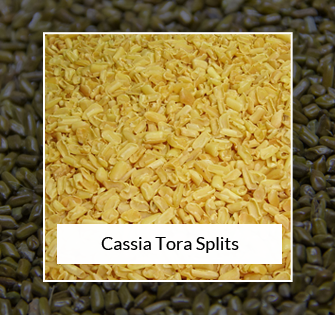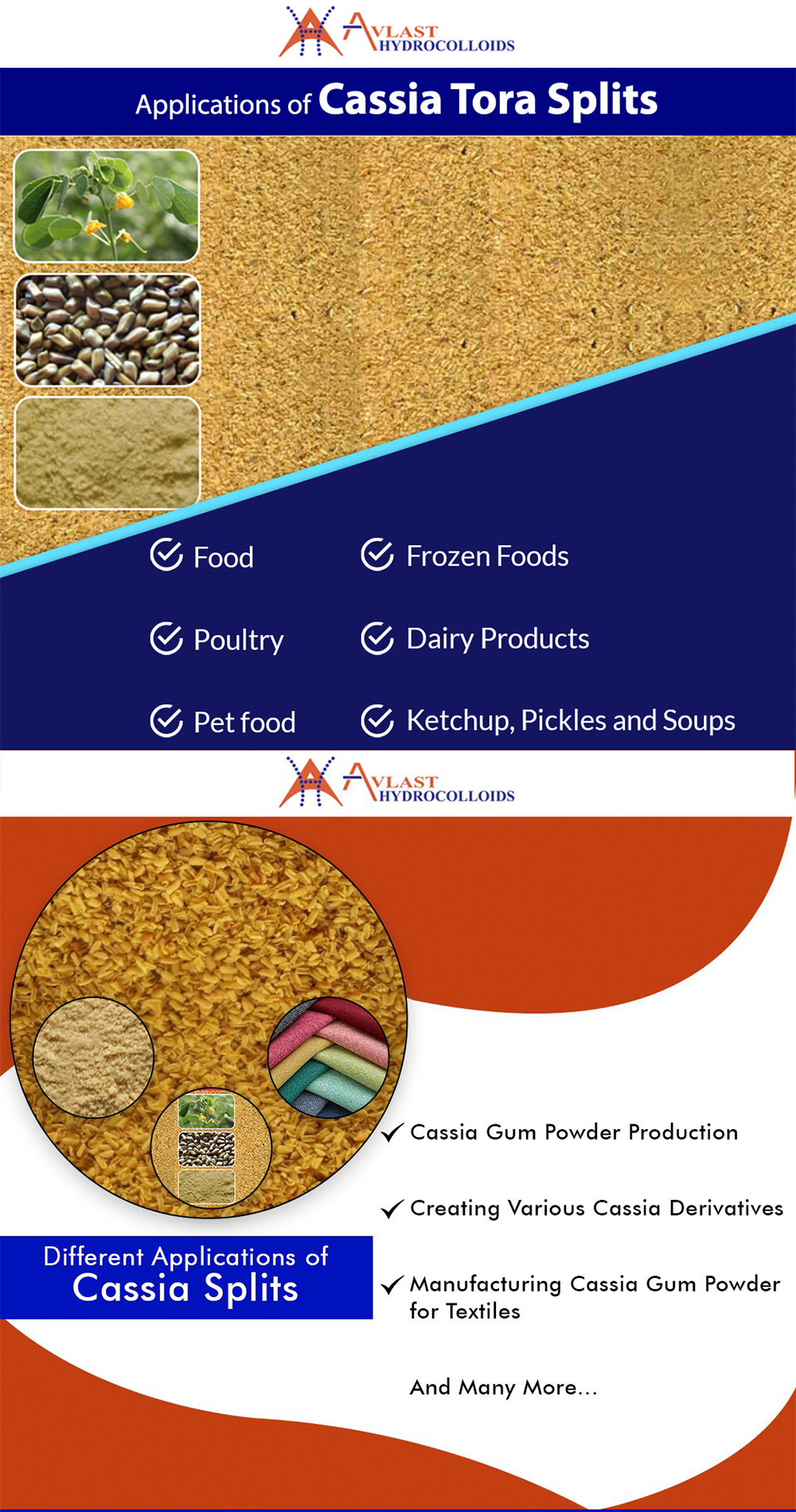Everything About Cassia Tora Splits
Cassia Tora Splits are often harvested from the seeds of Cassia Obtusifolia, a plant in the Leguminosae family. This name is derived from the Latin words “obtus” (straight) and “folium” (leaf). It is a twelve-month plant that grows predominantly after the Indian monsoon season. This Cassia plant produces pods of around 20 cm in length that contain many cylindrically formed seeds. Cassia splits are cassia tora seeds that have split into two parts. All of these splits are commonly referred to as senna splits, cassia senna splits, and cassia torea splits, and so on.
Process of Obtaining Cassia Tora Splits
The splitting process consists of several steps, the first of which is to process the seeds. During this process, the exterior husk, also known as the endosperm, is separated. This, is also referred to as the ovary or seed germ. The split consists primarily of polysaccharides, which aid in the collection of gum.

De-Husking Procedure
Heating, grinding, polishing, and filtering are common methods for de-husking. Cassia splits are largely composed of galactose and mannose. The split can be obtained by de-husking and splitting processes that divide the husk and germ. The effect of the splitting process aids in the liberation of the germ, plus split from the seed endosperm. This is then heated to turn it into a brittle substance that can be easily removed and purified, and a procedure known as pulverization is used to speed up the cleansing. Moreover, due to its size of particles, the split remains intact even at various temperatures, and the same property allows to quickly separate husk and germ particles by incorporating another few physical cleaning methods.
Obtaining Cassia Gum Powder from Cassia Tora Splits
Having followed the milling and screening processes to de-husk, and de-germ the seeds, the final cleansing is performed using various physical cleaning methods to ensure that contaminants such as agricultural debris and stones are eliminated, and the splitting steps must be completed. Following the use of heat and mechanical processes to divide splits, the resultant split is ground and mixed to get the dry powder.
Applications of Cassia Tora Splits
- They’re light yellowish splits that dissolve in warm water. They act as thickening agents and produce gels by utilizing xanthan and carrageenan. These Cassia Torea splits are frequently employed as food preservatives. Cassia gum powder derived from cassia tora splits is one of a handful of historic pure ingredients known for their pure gelling properties.
- Cassia Gum Powder obtained from cassia splits can be used in animal feed products such as puppy meals, kitten meals. It’s utilized as a gelling factor in pet meals as a preservative, thickener, and gel-forming element in the production of processed pet foods. mostly wet-canned dog and cat food
- Cassia Gum derived from Cassia tora splits is used in the production of air fresheners in the form of gels. It is commonly employed as emulsifiers, foam preservatives, thickeners, moisture preservation components, and texturizing elements in frozen dairy desserts, cheese, and chicken products. It is used in almost all meat-containing meals such as snacks, salads, iced multi-course meat entrees, and sandwich ingredients created for commercial purposes.
- Cassia Gum has its application in the textiles industry too, it is used in printing paste to protect our environment from the dangers that synthetic colours and gums provide. This cassia gum should be used to raise awareness among artists and printing units about the use of natural gum for natural printing, as well as to develop items for mass distribution.
Bottom Line
Cassia Tora Splits have become important part of many industries whether in form of Cassia Gum powder or as splits they are widely being used because of their easy and affordable availability in many manufacturing and production units like food, dyes, textiles, dairy products and so on.


